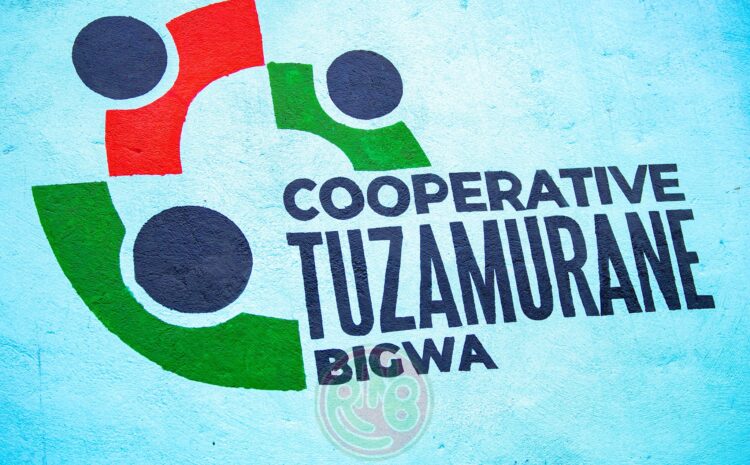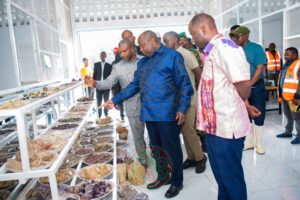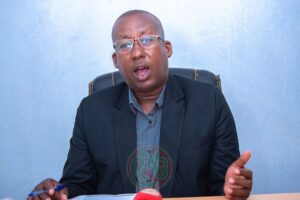
Bujumbura, October 18, 2025. The President of the Republic of Burundi, @GeneralNeva, conducted a field visit to the cooperatives involved in the purchase and export of the so-called « 3T » minerals (Coltan, Cassiterite, and Wolframite). This initiative is part of a clear strategy: to make mineral resources a major lever for economic development and the country’s autonomy, by further integrating local actors into the value chain and strengthening governance and traceability of resources.Tuzamurane bigwa


Strategic Companies Engaged in Export
During this inaugural phase of his visit, the Head of State visited two key companies in the sector: Burundi Mineral Export and Tanganyika Mineral Ltd. These companies, specialized in the purchase and export of strategic minerals, play a crucial role in structuring the national mining sector. According to official observations, they demonstrate an operational capacity to aggregate the necessary volumes, secure trade flows, and promote better integration between extraction areas and international markets. The visit to these companies was an opportunity to reiterate the goal: to enable a real valuation of resources while ensuring transparency in transactions and adherence to environmental and social standards.
The Tuzamurane Bigwa Cooperative on the Front Line

The presidential visit then continued at the Tuzamurane Bigwa cooperative, which has a significant warehouse of minerals awaiting export. On-site, President Ndayishimiye was able to gauge the extent of the stocks and assess the capacity of this associative structure to contribute concretely to the national development strategy. The site highlights the mechanisms for consolidating and organizing small and medium-sized mining entities, which, in line with local development logic, can now exert greater influence on international trade thanks to better-managed stocks, quality procedures, and stronger links with foreign buyers.
In this context, the official observation highlighted several key areas: the need to improve logistical conditions to reduce export times, strengthen provenance and quality certifications, and ensure a better distribution of revenues generated by mining activities. The Tuzamurane Bigwa cooperative is presented as an essential link in this framework, capable of uniting local operators, securing flows, and providing a credible showcase of the country’s mining capabilities.
Context and Ambitions: Transforming 3T Resources into a Growth Engine
The 3T—coltan, cassiterite, and wolframite—represents a set of strategic resources capable of generating substantial revenue, jobs, and vertical integration capabilities within the economy. The visit is part of a clear political will to implement an exploitation strategy that promotes local added value, encourages investment in port and logistical infrastructures, and enhances the performance of national and local companies operating in the mining sector. Beyond the numbers, it is also about strengthening governance mechanisms, transparency, and traceability of minerals to combat informal circuits and practices that could divert part of the revenues outside the legal framework. Tuzamurane bigwa
The observations made during this visit underscore crucial challenges: stabilizing supplies, securing stocks, and accelerating exports while ensuring technical and environmental standards. In this context, the government seems to favor an approach that combines support for local private investment, revitalization of cooperatives, and improvement of basic infrastructures (roads, warehouses, health checkpoints, and mining control), to create a more resilient and competitive ecosystem in global markets.
Implications for Development and Perspectives – Tuzamurane bigwa
This presidential initiative in the mining sector brings several potential positive outcomes. First, improved liquidity of resources through a clearer supply chain and more secure export volumes. Second, concrete training and employment opportunities for local communities, particularly around cooperatives and intermediary companies that connect extraction sites with regional and international markets. Finally, an improved perception of the Burundian mining sector internationally, enhancing the confidence of partners and potential investors.
However, this approach requires ongoing vigilance on several fronts: the environmental sustainability of operations, respect for workers’ rights, combating illegal exploitation, and fair revenue sharing with affected communities. The government is thus called upon to support public and private operators through clear regulatory frameworks, revenue and redistribution mechanisms compatible with local development goals, and training and skills transfer initiatives.
Next Steps and Commitments – Tuzamurane bigwa
According to available information, the authorities intend to intensify the structuring work of the 3T sectors, support traceability tools, and consolidate the logistical and storage capacities of cooperatives and export companies. There are also plans to increase technical training programs for local actors, improve responsible operating conditions, and establish sustainable partnerships with international buyers to promote fair and predictable pricing.
Conclusion
President Ndayishimiye’s visit, guided by the goal of making mineral resources a lever for growth and autonomy, reaffirms Burundi’s commitment to transforming its 3T potential into real and measurable value for its citizens. By engaging with Burundi Mineral Export, Tanganyika Mineral Ltd, and Tuzamurane Bigwa, the state demonstrates its willingness to build a robust, transparent, and inclusive mining ecosystem, where storage, export capacities, and community capabilities converge to support a more sustainable and equitable development trajectory. The coming weeks and months will be crucial for assessing local ownership of the sector and the quality of growth generated by these strategic resources.
